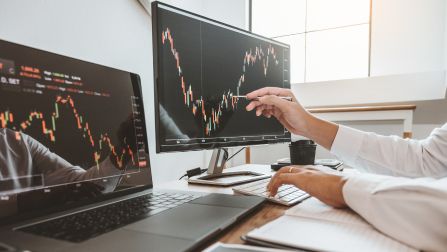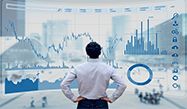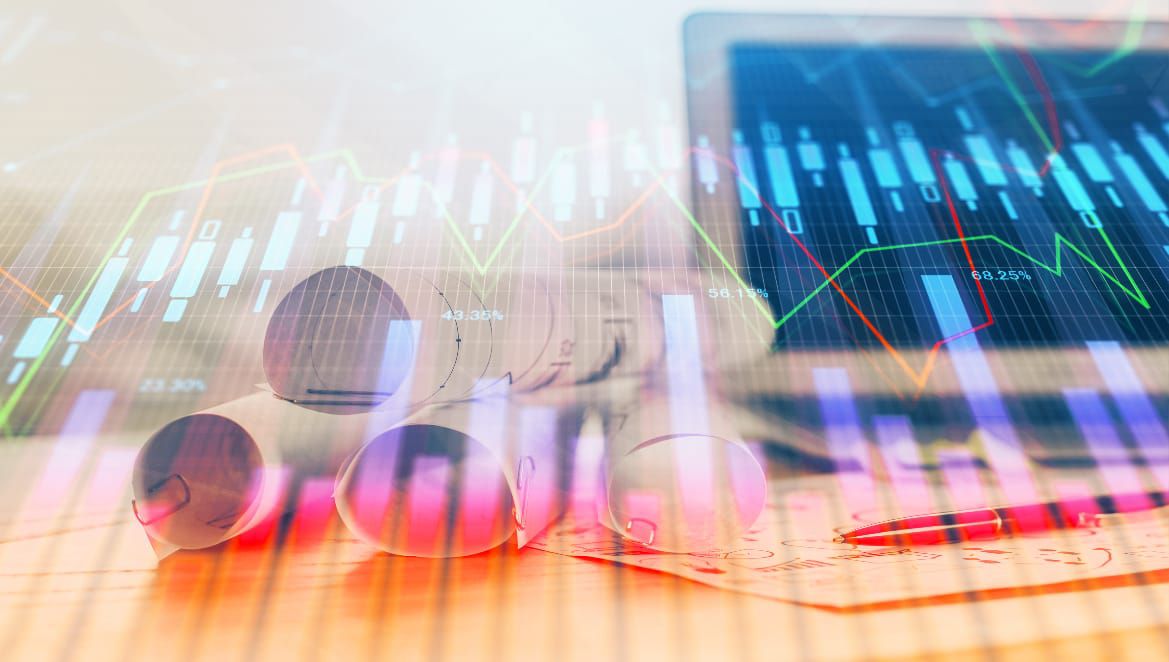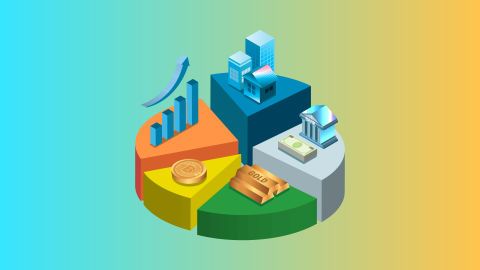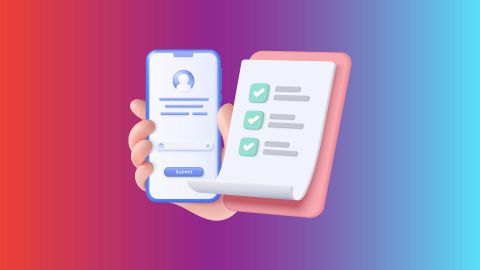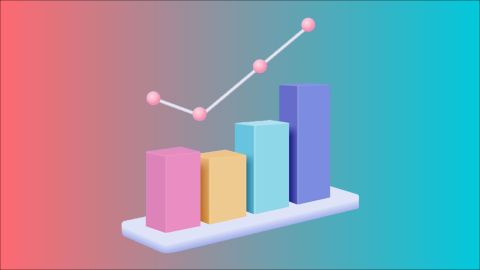To better understand how Amazon evolved over the years, let’s check out some key events that occurred in Amazon’s journey:
1994
In July 1994, Jeff Bezos launched Amazon as an “online bookstore” from his garage in Washington. His ultimate aim was to create "An Everything Store." Originally, he considered names like "Cadabra" and "Relentless," but chose "Amazon" after the world’s largest river.
In the early days, Amazon relied on word-of-mouth publicity for sales. Bezos, along with his small team, personally delivered packages to the post office. Interestingly, if you still type "www.relentless.com," it will redirect you to Amazon’s website!
1997
By 1997, Amazon’s annual revenue had surged to $148 million. To secure funds for future growth, Jeff Bezos decided to take the company public. On May 15, 1997, Amazon launched its IPO on NASDAQ at $18 per share. The company raised $54 million.
In 1997, Amazon also celebrated its one-millionth order, which Bezos personally delivered to a buyer in Japan.
1999
By 1999, Amazon had diversified further. It was now selling video games, home-improvement items, consumer electronics, software, and more. Amazon's reach even extended to around 150 countries. This rapid growth led to Jeff Bezos being named Time Magazine's Person of the Year in 1999. By the end of the year, Amazon's stock peaked at $106.69 per share.
2000 and 2001
In 2000, Amazon began allowing individual sellers and merchants to list their products alongside Amazon's own. The company also introduced a new logo with a curved arrow from "A to Z”.
2002
By 2002, Amazon expanded into clothing. It partnered with multiple fashion brands to offer over 400 clothing lines on its platform. To attract more customers, Amazon introduced the "Free Super Saver Shipping" option. It provided free shipping for orders over $99.
2003
In 2003, Amazon expanded beyond retail by launching Amazon Web Services (AWS). Later, this service became a major profit generator and supported Amazon’s growth. It also began leasing its e-commerce platform to other retailers like Target and Borders.
2004
In 2004, Amazon entered the Chinese market by acquiring “Joyo”. It was China’s largest online seller of electronics and books. However, Amazon China lagged behind local giant Alibaba in market share. By August 2004, Amazon’s stock was valued at $38.63 per share.
2005
In 2005, Amazon introduced Amazon Prime. It was a loyalty program priced at $79 per year. The launch of Amazon Prime significantly enhanced customer engagement.
2006
In 2006, Amazon launched Fulfillment by Amazon (FBA) for third-party sellers. It allowed them to store products in Amazon's warehouses for a fee. When orders were placed, Amazon managed packing, shipping, and even returns and refunds. This simplified the process for sellers.
2007
This year was an important part of Amazon journey. The company introduced “Kindle”, an electronic reader priced at $399. It allowed easy downloads of books and magazines. By November 2007, Amazon’s stock rose to $79.18 per share.
2008
Two months after launching the Kindle, Amazon acquired “Audible”. It was an audiobook company with 80,000 programs. The acquisition cost was $300 million.
2010
Amazon expanded its business by acquiring “Quidsi”. It was the parent company of Diapers.com. The acquisition was made for $554 million.
2013
Amazon launched its marketplace in India. It introduced the Mayday button for instant tech support in 2013. It also acquired The Washington Post and started Sunday deliveries.
2014
2014 was a crucial year in Amazon's journey as the company launched its “fire smartphone”. This move was a failure, and the product was discontinued. Later in the year, the company launched Fire TV and Amazon Echo speakers. Amazon’s stock reached $378.77 in March.
2017
Amazon acquired Whole Foods for $13.7 billion in June 2017. In this way, the company entered the grocery and physical retail markets with 471 stores. This year, Jeff Bezos became the world's richest man.
2018
In 2018, Amazon's market value surpassed $1 trillion. The company raised its minimum wage to $15 per hour and chose New York and Virginia for its new headquarters. By September 2018, Amazon's stock hit $2,039.51 per share.
2019
The company marked its 25th anniversary. At this point, Amazon had 6,50,000 employees and dominated online sales in the US.
2020
The COVID-19 pandemic boosted Amazon's business as online purchases surged. This raised its market cap to $1.5 trillion and stock price to over $3,500 by September.








 Food & Beverages
Food & Beverages Fashion
Fashion Beauty & Personal Care
Beauty & Personal Care Health & Wellness
Health & Wellness Home & Kitchen
Home & Kitchen

 Loan Against Shares
Loan Against Shares Loan Against Mutual Funds
Loan Against Mutual Funds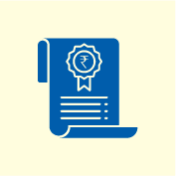 Loan Against Bonds
Loan Against Bonds Loan Against Insurance Policy
Loan Against Insurance Policy ESOP Financing
ESOP Financing Two-wheeler Loan
Two-wheeler Loan Loan for Lawyer
Loan for Lawyer Industrial Equipment Finance
Industrial Equipment Finance Industrial Equipment Balance Transfer
Industrial Equipment Balance Transfer Industrial Equipment Refinance
Industrial Equipment Refinance
 Smartphones
Smartphones Air Conditioner
Air Conditioner Led TVs
Led TVs Air Coolers
Air Coolers Refrigerators
Refrigerators Washing Machines
Washing Machines Laptops
Laptops

 Trading Account
Trading Account Open Demat Account
Open Demat Account Margin Trading Financing
Margin Trading Financing Share Market
Share Market Invest in IPO
Invest in IPO All stocks
All stocks Top gainers
Top gainers Top losers
Top losers 52 week high
52 week high 52 week low
52 week low
 Business Loan
Business Loan Secured Business Loan
Secured Business Loan Loan against property
Loan against property Loans against property balance transfer
Loans against property balance transfer Loan against shares
Loan against shares Home Loan
Home Loan Loans against mutual funds
Loans against mutual funds Loan against bonds
Loan against bonds Loan against insurance policy
Loan against insurance policy
 Term Life Insurance
Term Life Insurance ULIP Plan
ULIP Plan Savings Plan
Savings Plan Retirement Plans
Retirement Plans Child Plans
Child Plans Investment Plans
Investment Plans
 Get Bajaj Prime
Get Bajaj Prime
 ULIP Plan
ULIP Plan Savings Plan
Savings Plan Retirement Plans
Retirement Plans Child Plans
Child Plans Free Demat Account
Free Demat Account Invest in IPO
Invest in IPO Invest in Stocks
Invest in Stocks Margin Trading Facility
Margin Trading Facility
 Check your Credit Score
Check your Credit Score
 Bike
Bike Scooter
Scooter Electric Vehicle
Electric Vehicle Best Sellers
Best Sellers Popular Brands
Popular Brands
 New Car Loan
New Car Loan Used Car Loan
Used Car Loan Loan Against Car
Loan Against Car Car Loan Balance Transfer and Top-up
Car Loan Balance Transfer and Top-up
 Engagement Zone
Engagement Zone Game Zone
Game Zone
 Personal Loan EMI Calculator
Personal Loan EMI Calculator Personal Loan Eligibility Calculator
Personal Loan Eligibility Calculator Home Loan EMI Calculator
Home Loan EMI Calculator Home Loan Eligibility Calculator
Home Loan Eligibility Calculator Good & Service Tax (GST) Calculator
Good & Service Tax (GST) Calculator Flexi Day Wise Interest Calculator
Flexi Day Wise Interest Calculator Flexi Transaction Calculator
Flexi Transaction Calculator Secured Business Loan Eligibility Calculator
Secured Business Loan Eligibility Calculator Fixed Deposits Interest Calculator
Fixed Deposits Interest Calculator Two wheeler Loan EMI Calculator
Two wheeler Loan EMI Calculator New Car Loan EMI Calculator
New Car Loan EMI Calculator Used Car Loan EMI Calculator
Used Car Loan EMI Calculator All Calculator
All Calculator
 Hot Deals
Hot Deals Clearance Sale
Clearance Sale Kitchen Appliances
Kitchen Appliances Tyres
Tyres Camera & Accessories
Camera & Accessories Mattresses
Mattresses Furniture
Furniture Watches
Watches Music & Audio
Music & Audio Cycles
Cycles Mixer & Grinder
Mixer & Grinder Luggage & Travel
Luggage & Travel Fitness Equipment
Fitness Equipment Fans
Fans
 Personal Loan for Doctors
Personal Loan for Doctors Business loan for Doctors
Business loan for Doctors Medical Equipment Finance
Medical Equipment Finance Secured Business Loan
Secured Business Loan Loan against property
Loan against property Loan against share
Loan against share Gold Loan
Gold Loan Home Loan
Home Loan
 Smartphones
Smartphones Air Conditioners
Air Conditioners LED TVs
LED TVs Air Coolers
Air Coolers Refrigerators
Refrigerators Washing Machines
Washing Machines Laptops
Laptops Water Purifiers
Water Purifiers Tablets
Tablets Kitchen Appliances
Kitchen Appliances Mattresses
Mattresses Furniture
Furniture Music and Audio
Music and Audio Cameras & Accessories
Cameras & Accessories Cycle
Cycle Watches
Watches Tyres
Tyres Luggage & Travel
Luggage & Travel Fitness Equipment
Fitness Equipment
 Home Loan
Home Loan Transfer your existing Home loan
Transfer your existing Home loan Loan against Property
Loan against Property Home Loan for Salaried
Home Loan for Salaried Home loan for self employed
Home loan for self employed Home Loan EMI Calculator
Home Loan EMI Calculator Home Loan eligibility calculator
Home Loan eligibility calculator Home Loan balance transfer
Home Loan balance transfer
 Offer World
Offer World
 Articles
Articles
 Overdue Payments
Overdue Payments Other Payments
Other Payments
 Document Center
Document Center Bank details & Documents
Bank details & Documents Tax Invoice Certificate
Tax Invoice Certificate
 Do Not Call Service
Do Not Call Service
 Your Orders
Your Orders Hamara Mall Orders
Hamara Mall Orders

 Fixed Deposit (IFA) Partner
Fixed Deposit (IFA) Partner Loan (DSA) Partner
Loan (DSA) Partner Debt Management Partner
Debt Management Partner EMI Network Partner
EMI Network Partner Become a Merchant
Become a Merchant Partner Sign-in
Partner Sign-in
 Food & Shopping
Food & Shopping Credit Card Hub
Credit Card Hub ULIP Plans
ULIP Plans Top Gainers Stock
Top Gainers Stock Top Losers Stock
Top Losers Stock Saving Plan
Saving Plan Term Insurance
Term Insurance
 Live Videos
Live Videos